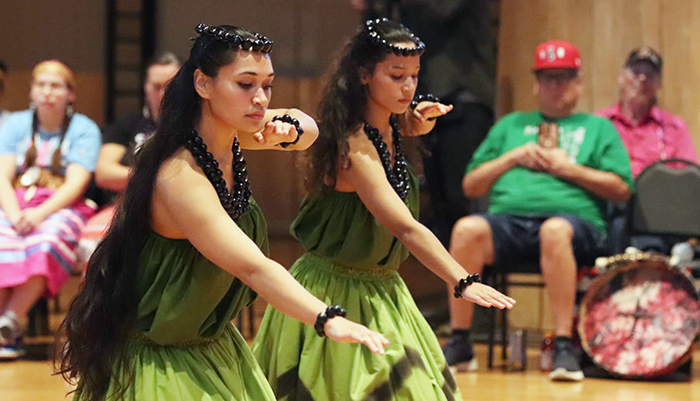
By Kalvin Valdillez, Tulalip News
“When I say Indigenous People, you say hell yeah!,” instructed Tulalip Board of Director, Theresa Sheldon. The call was met with a resounding response that reverberated off of the Gathering Hall walls, and was accompanied by many whistles, cheers, and drumbeats.
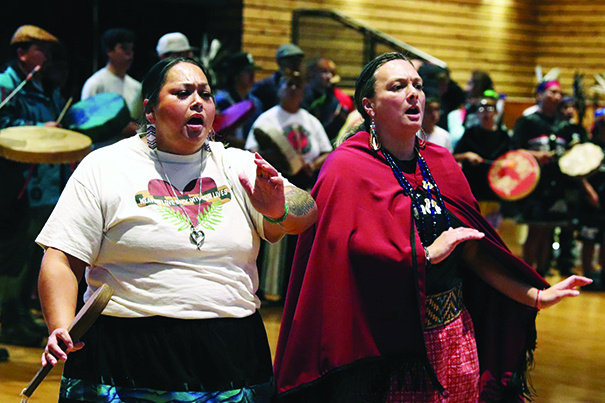
Native pride was on display as the people of Tulalip arrived at the Hall in full regalia on the evening of October 14. They were greeted by the aroma of traditional foods as salmon was prepared over flame for the gathering.
More than a day of recognition, Indigenous Peoples Day has become a time to celebrate our heritage, traditions, and culture across the nation. All of which were nearly stripped away from us due to colonialism and assimilation efforts. It’s become a day to educate the wider population about our history and our connection to the land, the waters, and how the stewardship of Mother Earth provided sustainability for our people generation upon generation. Perhaps most importantly, it’s a day to hold our youth up and pass those teachings on to ensure our way of life continues well into the future.
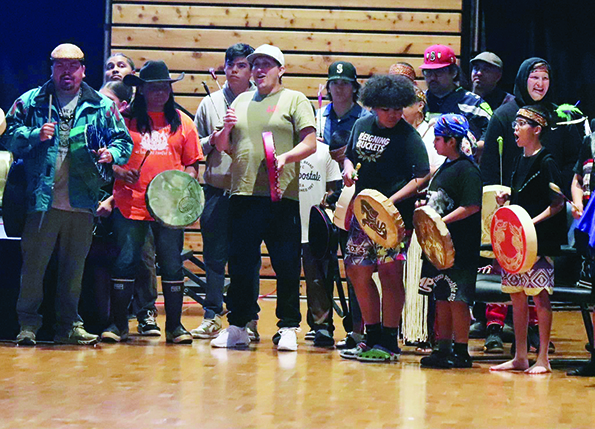
Fittingly, nearly the entire Indigenous Peoples Day gathering was led by the youth. Approximately 250 community members were in attendance. After an hour of socializing and enjoying that salmon dinner, event emcee, Deyamonta Diaz, asked everyone to take a seat at the center of the Gathering Hall as the festivities of the night began.
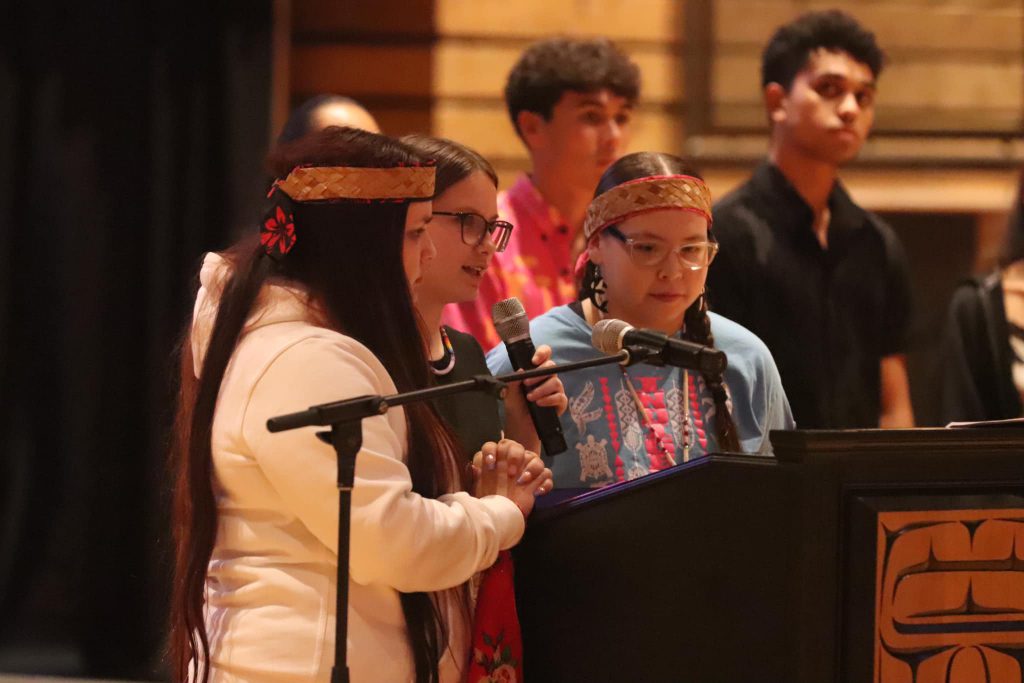
At the head of the hall stood fourteen young adults, ten Tulalip tribal members and four visitors hailing from O’ahu, Hawaii. Now, we don’t want to gloss over this moment, because it was beautiful and powerful. And beyond the dreams of many Tulalip ancestors, who faced unspeakable punishments for this very act while attending Indian boarding schools. Every single member of the youth coalition took time to introduce themselves, and their lineage, in traditional Lushootseed. And what followed was equally heartwarming and promising as the youth took matters into their own hands and introduced the Tulalip Youth Education Declaration to the public.
With the assistance from those four visitors, Maliatoa Tuallii, Ka’iwa Foster, Lilia Iokepa-Guerrero, and Maui Iokepa-Guerrero, the Tulalip youth spent the entire weekend, leading up to Indigenous Peoples Day, building a detailed declaration. The areas of focus included youth protection, elder and youth interactions, tribal sovereignty education, and health and wellness.
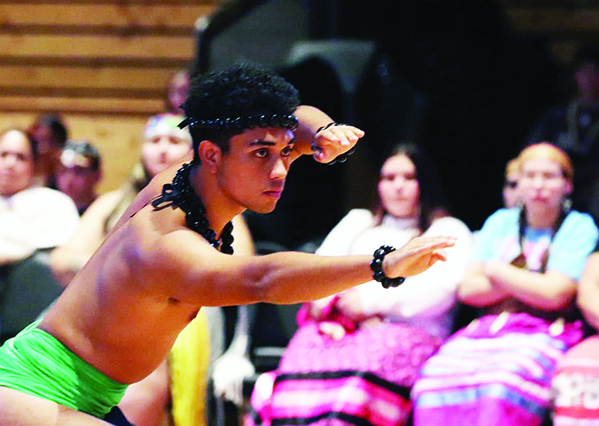
Maliatoa, Lilia, Ka’iwa, and Maui are members of Hawaiian nonprofit, Papahana Aloha ʻĀina. Ten years ago, the organization wrote their own declaration dedicated to Hawaiian cultural education, youth leadership development, language preservation, as well as land stewardship and environmental advocacy. Since then, the group spent those years spreading their message and sharing their culture across the nation. With their experience and success, the Tulalip youth called upon Papahana Aloha ʻĀina to not only learn how to design their declaration, but also to learn new ideas of how to implement those motions and initiatives into everyday Tulalip.
The result was astounding. In solidarity, the group presented the declaration as one, taking turns stepping up to the podium and passing the mic with each PowerPoint slide.
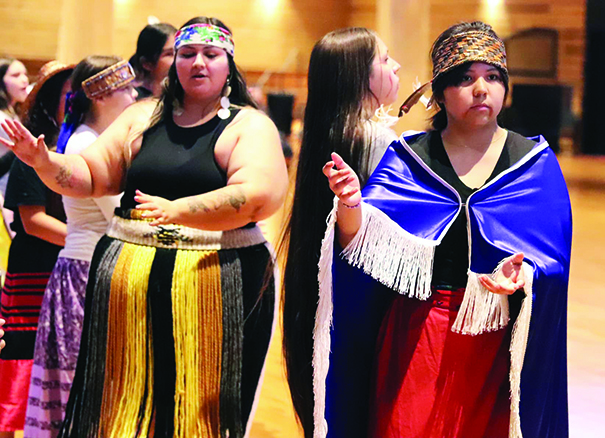
Tribal youth, Ariel Valencia, shared, “We chose food sovereignty to highlight because we can decolonize from the inside out by eating our traditional foods – being able to harvest and differentiate the native plants, being able to survive off the land. We want to have traditional medicine classes for devil’s club and stinging nettle – harvesting it, making salves, and making tea. It is all connected to food sovereignty and our traditional plants/food. Being able to gather also follows the medicine wheel which has four sections and four directions – spiritual, physical, mental, and emotional health, which helps you harvest right and produce the good medicine from those plants.”
Highlighting another topic of the declaration, Tribal member Lilly Jefferson got the crowd fired up. She said, “We want to implement the Lushootseed Young Learners program. I think this is an idea that we can take active steps to. It opens the door so that kids of all ages can learn Lushootseed outside of school. I think it’s a good opportunity for young adults who want to learn the language. Every Tribal department should be required to incorporate our language into their work. I think this is really important because we, as a people, should be using the language on a daily basis. So, why not incorporate it into our work? We think it should be expected of our Tribal members to be using our language on the daily.”
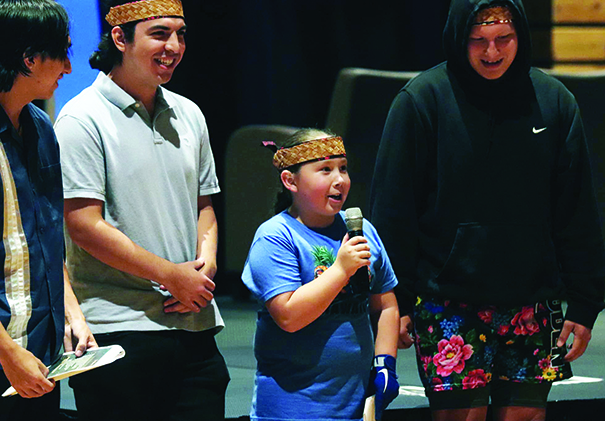
Lilly continued, “The next thing I wanted to highlight is that the Board of Directors have to know how to use our language – write it, read it, and speak it. This is very important because you’re the leaders of our Tribe, you should be speaking our language. Also, why would you even run if you’re talking like a colonizer? I think I speak for us all when I say that we’re so very proud of all this work that we’ve done in the last three days. And how much we’ve gotten to know each other, problem solve and create this beautiful document that will grow and thrive in the next couple years.”
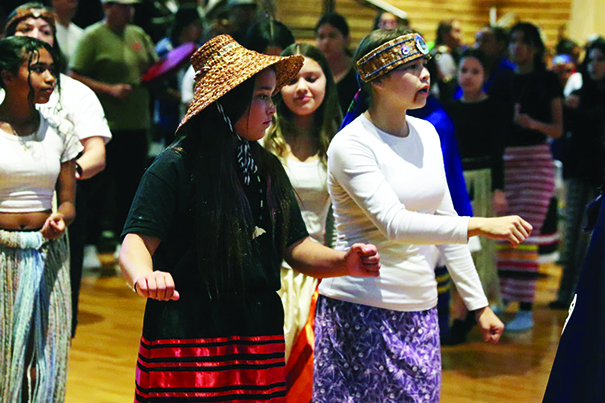
After the thirty-minute presentation by the youth, Deyamonta invited three Lushootseed language warriors to the podium to kick off the cultural exchange between Tulalip and Hawaii. Tribal members Thomas Williams, Oceana Alday, and Natosha Gobin each shared an interactive and traditional story in their ancestral language. The stories told were Crow and Octopus, Owl and Chipmunk, and Grandmother Cedar Tree. Like Theresa, the language warriors utilized the call and response technique to share their stories, and thereby introduce Lushootseed words and phrases to the attendees. Once all the stories were shared, the language warriors passed the baton to Papahana Aloha ʻĀina.
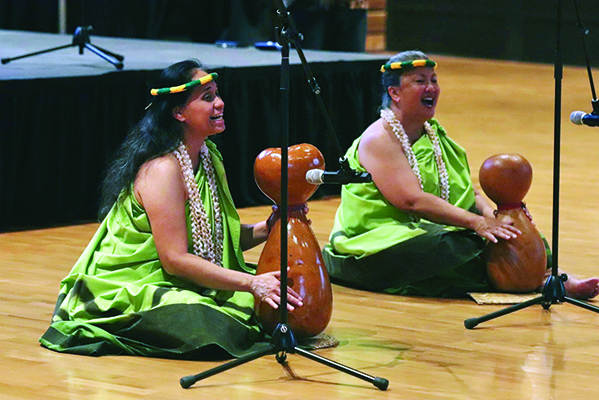
The similarities between the two cultures were recognized from the get-go as Ka’iwa blessed the floor beforehand by blowing on a conch shell in all four directions. Lilia, Maliatoa, and Maui then took the floor in their traditional garb. They danced to the rhythm of the ipu, a drum unique to the Hawaiian Islands, all while chanting in their traditional language.
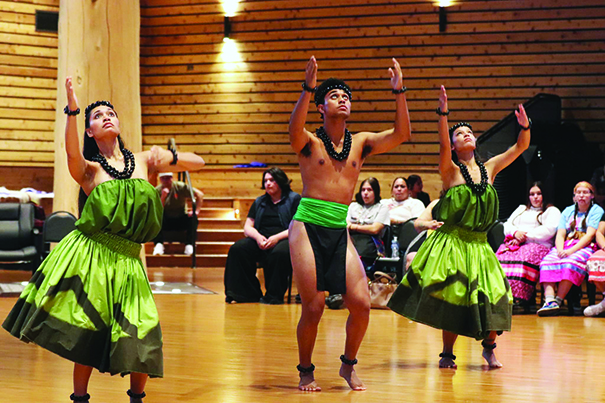
“We greet you from Hawaii; from the highest of heavens down to your fertile lands of Tulalip; from the highest peaks to your waters here with abundant fish that has sustained your people,” stated Papahana Aloha ʻĀina member, Dino Guerrero. “The youth did a chant that talks about our people on our islands. How the islands were created. And how after the islands were created, our people stepped foot on those islands and sustained themselves for thousands of years. It was a traditional hula, a welcoming chant. We’re going to take you on a tour of our islands with our traditional dances, from our oldest island down to our youngest island.”
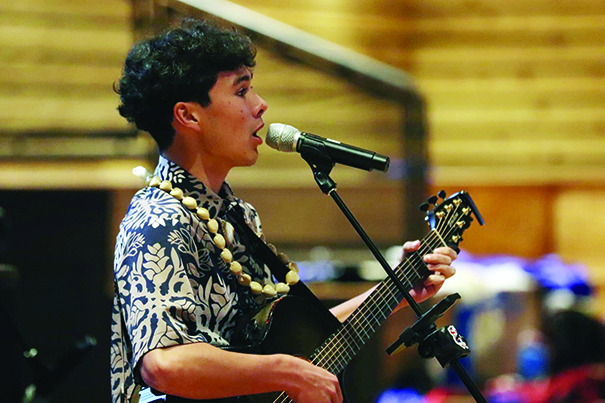
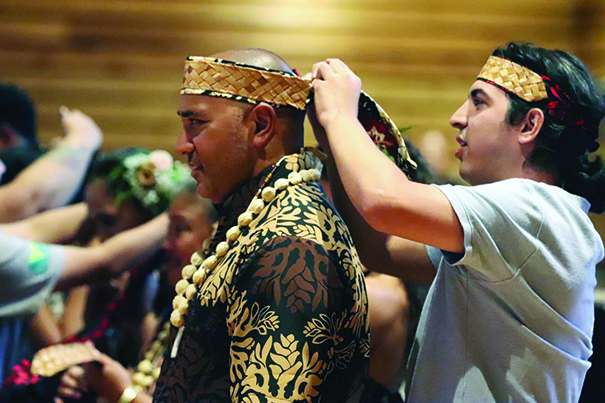
The community was mesmerized as the Hawaiian youth danced each intricate step of their traditional songs. After several songs, the dancers left the floor for a brief intermission. During this time, Ka’iwa grabbed the attention of everyone in the hall when he began playing the guitar and singing soothing melodies in the Hawaiian language. Ka’iwa performed three songs before the dancers returned to the floor. After changing out of their regalia, Dino informed everybody that the first half of their cultural exchange was solely traditional dances. The second half was reserved for more modern songs and dances.
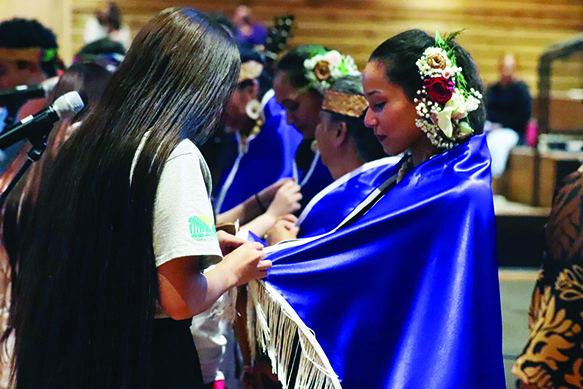
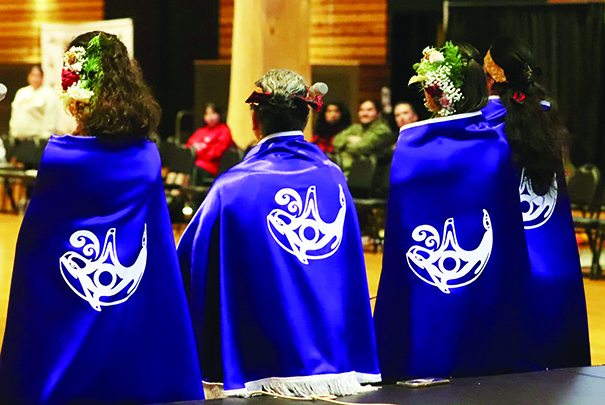
Papahana Aloha ʻĀina closed their ceremony behind microphones, with a song performed in unison by the entire group. Our Hawaiian relatives were honored and blanketed by the Tulalip youth and leadership. Donning new shawls and cedar headbands, Papahana Aloha ʻĀina received a standing ovation from Tulalip.
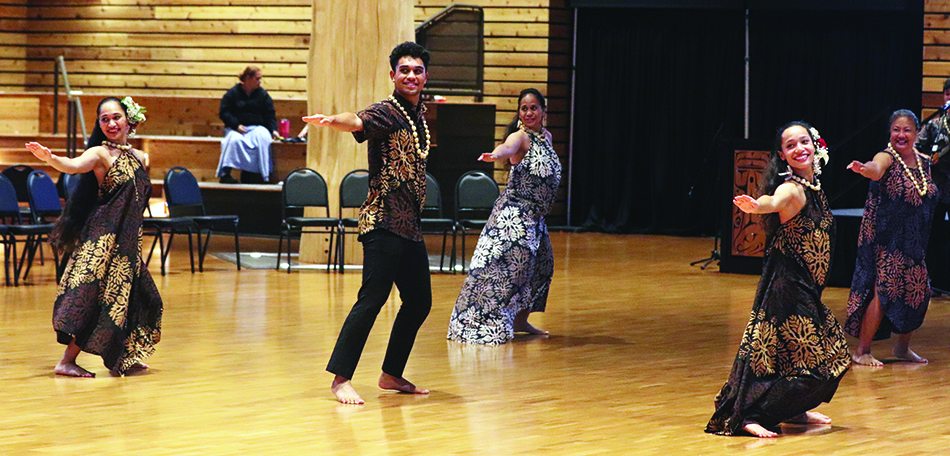
Originally intended to be a two-hour event, from 5 p.m. to 7 p.m., the Indigenous Peoples Day Gathering and cultural exchange went late into the night, to absolutely nobody’s dismay. Grateful that Papahana Aloha ʻĀina gave the community a glimpse into their traditions and culture, Tulalip was excited to return the favor. The group was invited to front row seats, and the Tribe brought the evening to an end with high energy throughout several of their ancestral songs.